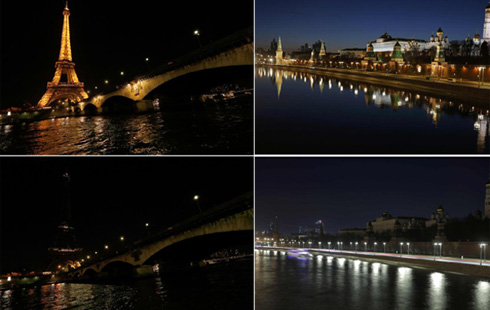Dragons returning to London after 230 years
The Great Pagoda at Kew Gardens in London will be restored to its 18th century splendor and reopen to the public next year, after a major renovation based on its historic ties with China.
The conservation project, sponsored by a Chinese-owned company, was started this year by Historic Royal Palaces, which is responsible for the care and restoration of the pagoda in partnership with the Royal Botanic Gardens at Kew.
The project will see the pagoda returned to its original appearance, complete with green and white roofs, a gilded finial and 80 wooden dragons. It has been sponsored by the House of Fraser department store, part of the Sanpower Group, which is headquartered in Nanjing.
The restoration draws on the similarities between the Kew pagoda and Nanjing's Porcelain Pagoda, which is believed to have inspired English architect Sir William Chambers when he designed the Great Pagoda in the 18th century.
Chambers visited China twice, in 1743 and 1748. He designed the Great Pagoda for the British royal family at the height of Europe's craze for chinoiserie, and is thought to have been influenced by prints he had seen of the famous pagoda in Nanjing.
"For more than two centuries, the pagoda has stood as a symbol of enlightened interest and fascination between different cultures, and between Chinese and British culture in particular," said Rupert Gavin, chairman of Historic Royal Palaces, at the sponsorship signing ceremony in September.
Pagodas are revered in traditional Chinese culture as repositories of relics or sacred writings, and as places of contemplation. However, the Kew pagoda was not designed as a religious monument; instead, it was intended to give the British a window into Chinese civilization.
Believed to have been commissioned by Princess Augusta, the mother of King George III, the 50-meter-tall, 10-story tower was famously adorned with 80 brightly colored wooden dragons, and it also offered one of the earliest and best bird's-eye views of London.
Matthew Storey, a member of Historic Royal Palaces' curatorial team, believes there were several reasons why a Chinese-style pagoda was built at Kew 255 years ago.
"First of all, Chinese design was very fashionable at the time, especially in gardens," he said. "Also, I think they were trying to bring the world to Kew, partly through exotic buildings and exotic plants, and exotic animals as well." He noted that there was a teacher-pupil relationship between Sir William Chambers, the designer, and the young George III, who was interested in a range of architectural styles.
The Great Pagoda was a hit with the public when it opened in 1762 at the Royal Botanic Gardens, but the dragons disappeared without a trace in the 1780s. Storey said the disappearance was probably a case of nature taking its course: "The dragons were made out of wood and they'd been outside for about 22 years. They may have decayed a lot."
The cost and restoration of the structure will be about 4.5 million pounds ($5.6 million). "With our parent company, Sanpower, based in Nanjing, it is fitting for us to support a building modelled on the Porcelain Pagoda at Nanjing, which has stood as a symbol of Anglo-Chinese exchange and cooperation for more than 250 years, said Frank Slevin, executive chairman of House of Fraser, the sponsor.
Because there are no surviving examples of the originals, solving the dragon puzzle has been a major part of the conservation project. The job called for the combined talents of a historian, a curator, a designer and a craftsman.
Craig Hatto, project director at Historic Royal Palaces, said the organization's research included tracking down every possible piece of dragon-form chinoiserie in Britain.
"We visited almost every historic house in the country, searching for similar dragons from the period. We also referred to the original design intent from Chamber's book. Once we had a rough idea of what we wanted the dragons to look like, we worked with a sculptor, Tim Crawley, to make a maquette (a preliminary model) of our dragon in clay," he said.























